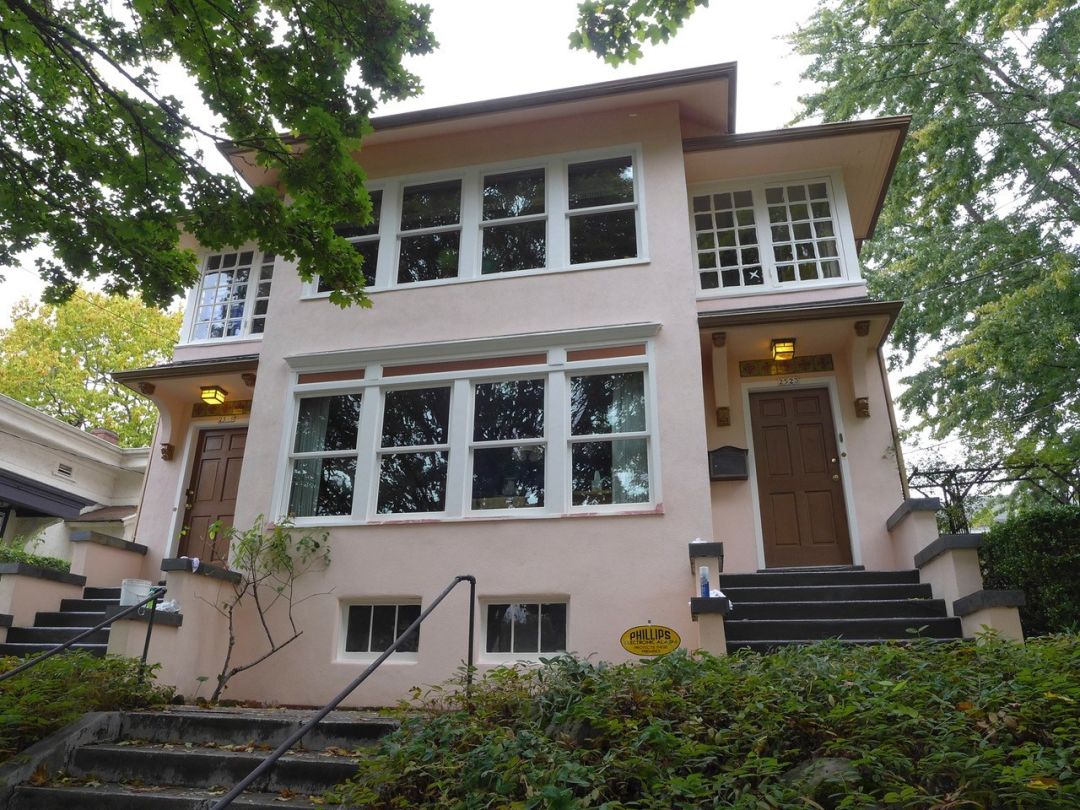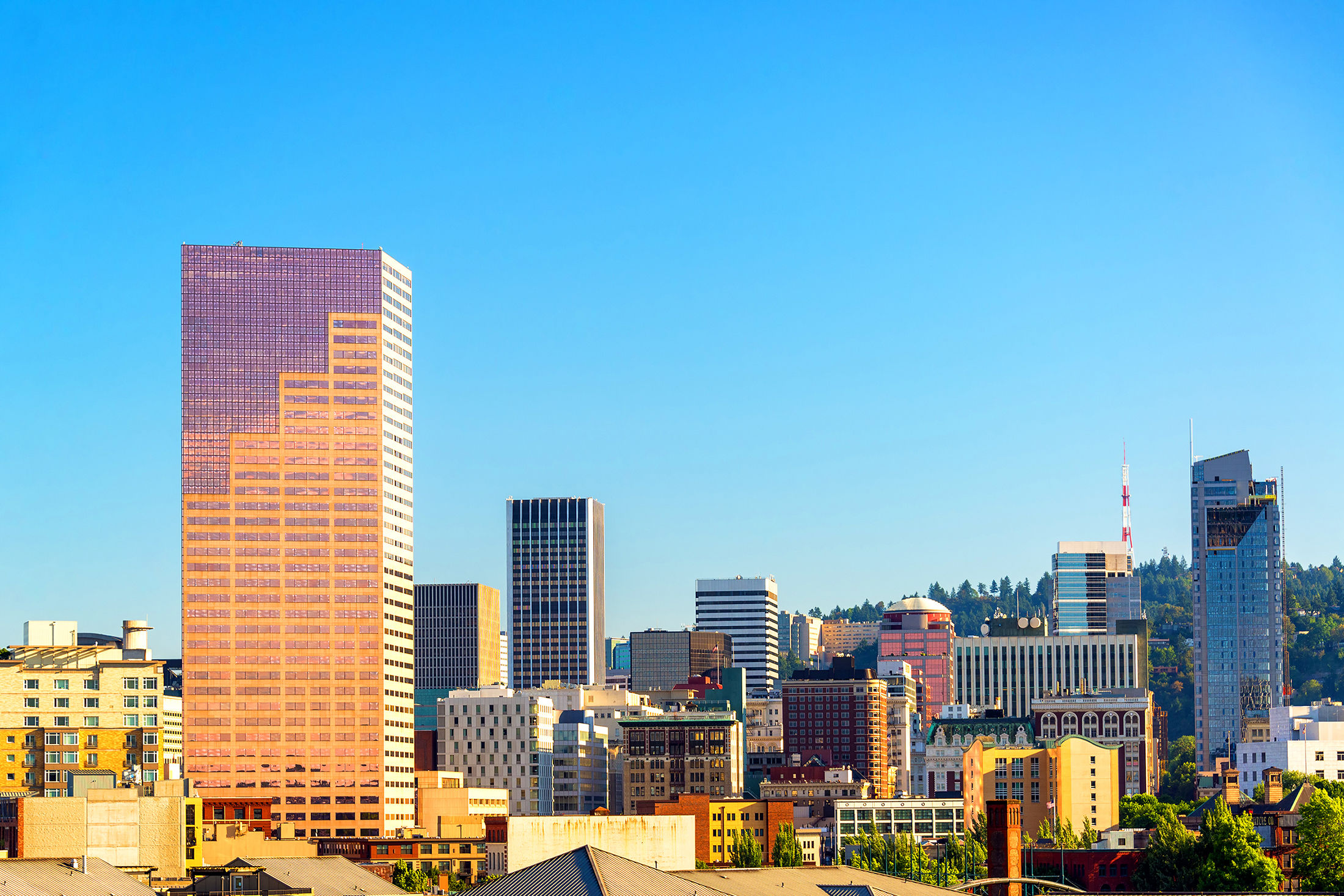City Deals a Big Blow to Single Family Zoning in Portland

An example of an older multiplex on Portland's inner Eastside. Under new zoning rules, more city homes could look like the modern version of this within the next five years.
Image: Courtesy Eli Spevak
In recent years, the residents of some of Portland’s leafiest districts have crusaded against the demolition of gracious older homes to make way for sprawling, cookie-cutter new-builds.
This month, the Portland City Council took action to stop the demolition/build-back-bigger cycle—so why aren’t those same neighbors celebrating?
Under the new Residential Infill Project rules, a new-build home must be scaled to the size of its single-family lot—capped at 3,500 square feet for a single residential lot. That’s a big change from the so-called McMansions that arose in neighborhoods like Eastmoreland and Laurelhurst over the last decade as the economy has boomed.
But, in a big, long-awaited win for affordable housing advocates and proponents of so-called “missing middle housing”—like the ADU in the backyard or the triplex that allows a teacher to buy a home near the school where she works—under the new rules, developers can build up to four units on lots that were previously zoned only for single-family houses.
For developers, the back-of-the-envelope math pencils out—they can make more of a profit on three homes than one, even if the three homes are all priced at midrange. In fact, developers can put up to six homes on a single-family lot now—think a cluster of small-footprint cottages—if at least three of those homes are available to low-income buyers at below market value.
It’s a huge change for a city that passed a zoning code favoring single family homes back in 1924, a state of mind that continued unchecked through the 1950s. (“Portland is a city of single-family homes. We are therefore of the opinion that only a very small percentage of the area of the City should be set apart for multiple dwellings,” wrote powerful New York City commissioner Robert Moses, who visited Portland in 1943. Moses is responsible for the Big Apple’s prioritization of highways over public transit, setting the fashion for a suburban boom and hollowed-out city cores nationwide.)
Over the decades, that emphasis on single-family housing in Portland has allowed walkable neighborhoods to flourish for fortunate families, but also driven up housing prices and boxed out generations of Black, Indigenous, and Latinx residents.
The new Residential Infill project, conceived six years ago with a letter written by Orange Splot co-housing developer Eli Spevak to the Portland Bureau of Planning and Sustainability, aims to shift that, though it may take a few years before the reality of these changes is truly visible in Portland neighborhoods.
“The city heard loud and clear that people are frustrated by the size of homes that are going in,” Spevak says. “They wanted to make sure new homes are more to scale for their neighborhoods. The Residential Infill Project reins that in, and provides more flexibility for what happens inside that structure. So they have incentivized people building multiple units.”
It makes sense, he says, for Portland today, where census data shows that almost two-thirds of households are just one or two people.
“If there is going to be infill development, Portland’s updated code will increase the odds that teachers and other essential workers have a chance to actually live in the neighborhoods where they work and play,” Spevak says. “We rely on people at all these income levels in our neighborhood—serving coffee, pumping gas, teaching our kids—but many of them can’t afford to live there.”
Not everyone is on board with the new rules, though. John Liu, a Laurelhurst resident who worked on the neighborhood’s successful bid to be listed on the National Register of Historic Places, says he doesn’t believe that the program will actually result in affordable housing for middle to low income families.
"We think it will create a lot of demolitions, a lot of removal of the last small and lower priced houses in neighborhoods, and replace them with infill development which is going to be more expensive than what got removed,” Liu says. “It will accelerate and continue the displacement and driving out of communities from Portland.”
In higher-priced neighborhoods, developers will knock down older, more modest homes and put up pricey townhomes, Liu predicts, while in the areas of Portland that remain more affordable, renters could lose their homes in favor of new development under the new rules.
Zoning, long the stuff of interminably wonky hearings, is suddenly in the news nationally in a big way, with President Donald J. Trump tweeting about his administration’s rules rollback that ensures that suburbanites “will no longer be bothered or financially hurt by having low-income housing built in your neighborhood.”
(The tweet refers to his plans to withdraw the Obama-era Affirmatively Furthering Fair Housing rule, which required local governments to rectify zoning laws that resulted in racially segregated housing.)
Portland’s Residential Infill Project is already being hailed as a national groundbreaker, building upon pre-existing laws in Minneapolis, Seattle, and Austin, Texas. But it’s not set in stone—opponents have until roughly the end of the month to file court challenges to the new rules, which would take effect in August 2021. The RIP passed the Portland City Council 3-1, with departing city Commissioner Amanda Fritz the only no vote.
Challenging it may prove tricky in a city that has had a nationally tracked racial awakening this summer. Liu says he doesn’t see much point to a legal battle, given that the city has the right to set zoning laws, but that he’d like to see comprehensive tracking of what gets demolished and what gets built under the new rules, so that council members could revise if the data shows that it’s not creating affordable housing a few years down the line.
The city’s not done. Next up: the Shelter-to-Housing Continuum Project, which aims to “expand the range of shelter and housing options for individuals with extremely low incomes.” That could include regulated tent facilities and tiny home pods in certain areas, more construction of mini apartments with shared kitchen spaces, and allowing churches, synagogues and mosques in residential areas to provide more shelter services. That plan is scheduled for hearings in front of the Planning and Sustainability Commission this fall.
In the meantime, wondering how multi-family housing on lots that were previously zoned for single-family-only homes might look? This recent virtual tour of “middle housing” from the Portland Home Builders Association has some clues.




